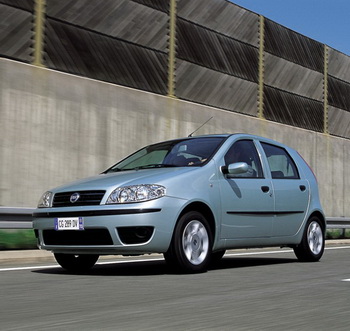 |
|
The Zastava
factory at Kragujevac in Serbia currently
builds the Fiat Punto Classic (above); under
the terms of the contract between Fiat and
the Serbian government, two new models will
be built at the facility. |
|
|
|
Serbian
Economy Minister Mlađan Dinkić and Fiat Group
Vice-President Alfredo Altavilla have finally signed the
annex to the contract on making joint investments in the
Zastava factory in Kragujevac after a year's delay,
reports B92.
With the payment
of 100 million euros of founding capital, the Serbian
carmaker essentially has become a part of the Fiat Group,
according to officials at the press conference held after
the signing. Fiat is bound by the agreement to produce two
new car models in Kragujevac, in addition to the Punto,
which is already being manufactured at the Zastava factory.
Fiat will modernize the factory with an announced investment
totaling 700 million euros, it was also said.
Dinkić said that the order will be given for the transfer of
the property of Zastava to the joint company of Fiat
Automobiles Serbia, and that in six days, the transfer of
property and 100 million euros from Fiat will be completed.
He added that the two new cars that will be produced in
Zastava will sold in European and American markets. The
minister said that the agreed capacity of production was
200,000 cars annually, from which, he said, 2 billion euros
in exports is expected.
Altavilla addressed journalists to say that President Boris
Tadić played a very important role in this project. “Tadić
gave us great support and I am very thankful to him,”
Altavilla said, adding that he wanted to thank the entire
Serbian government, especially Dinkić, for the cooperation
an efforts, as well as the expert teams that worked on the
realization of the process. He added that half of the
founding capital of Fiat will be paid by the end of the
year, and that the remaining 100 million euros will be
invested during 2010.
Ahead of the signing yesterday, economic analyst Milan
Kovačević said that this was good news, because it was a
confirmation that Fiat was not backing down from its plans
in Kragujevac. “This will end the push surrounding our
Zastava, which we have invested a lot of money in, and which
practically fell through and was not able to be restored as
an automobile factory. On the other hand, what we did now
works mostly to the advantage of Fiat, and we can be happy
that we will in some period of time, maybe in a year or two,
have significant exports. But if we do not activate domestic
components and parts as well, there will be increased
imports along with the exports. Everything depends on how
things will progress,” Kovačević said.
As the minority owner, the government will be providing
property and equipment for the joint company, and while Fiat
is expected to pay 100 million euros, Serbia will pay 50
million euros as its founding capital. Kovačević said that
it would be better for that money not to come from the
budget. “It is not the best solution for the state to create
new capital with the money of taxpayers. It would be good
for the government to think about how it will privatize
this, and to have domestic private capital co-participate in
the automobile factory with Fiat,” he said. Fiat’s business
plan will depend on how the situation on the international
car market progresses, this analyst said.
The total investments of Fiat in Zastava was expected to be
700 million euros. The deadline for paying this sum was the
end of this year, which was postponed due to the economic
crisis.
Report
courtesy of B92
|